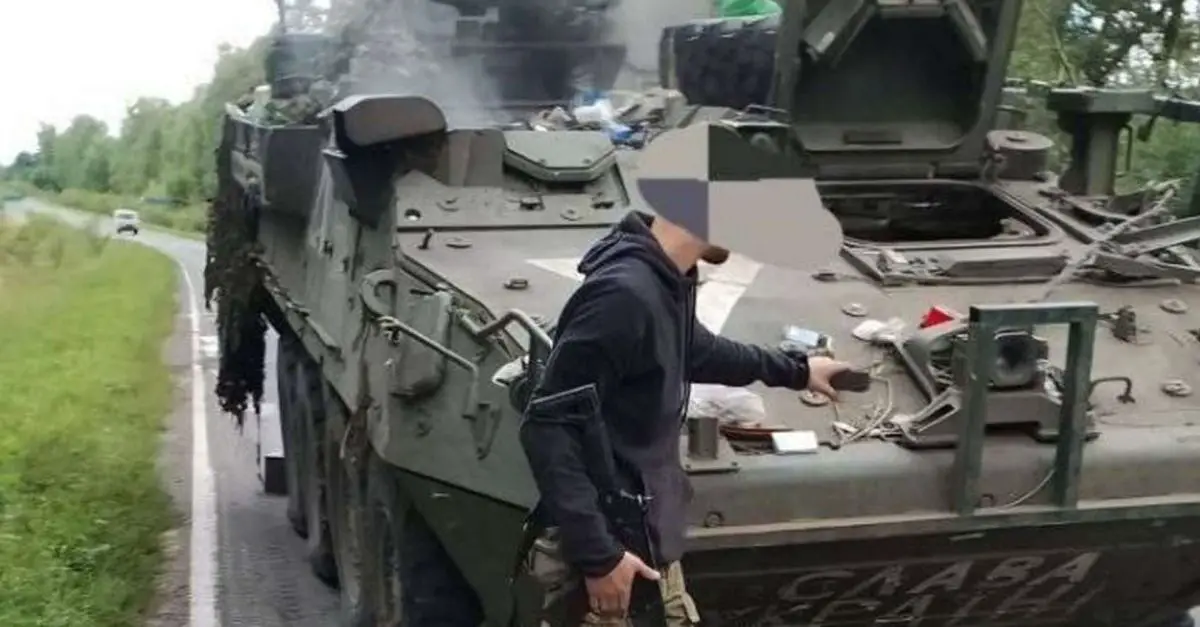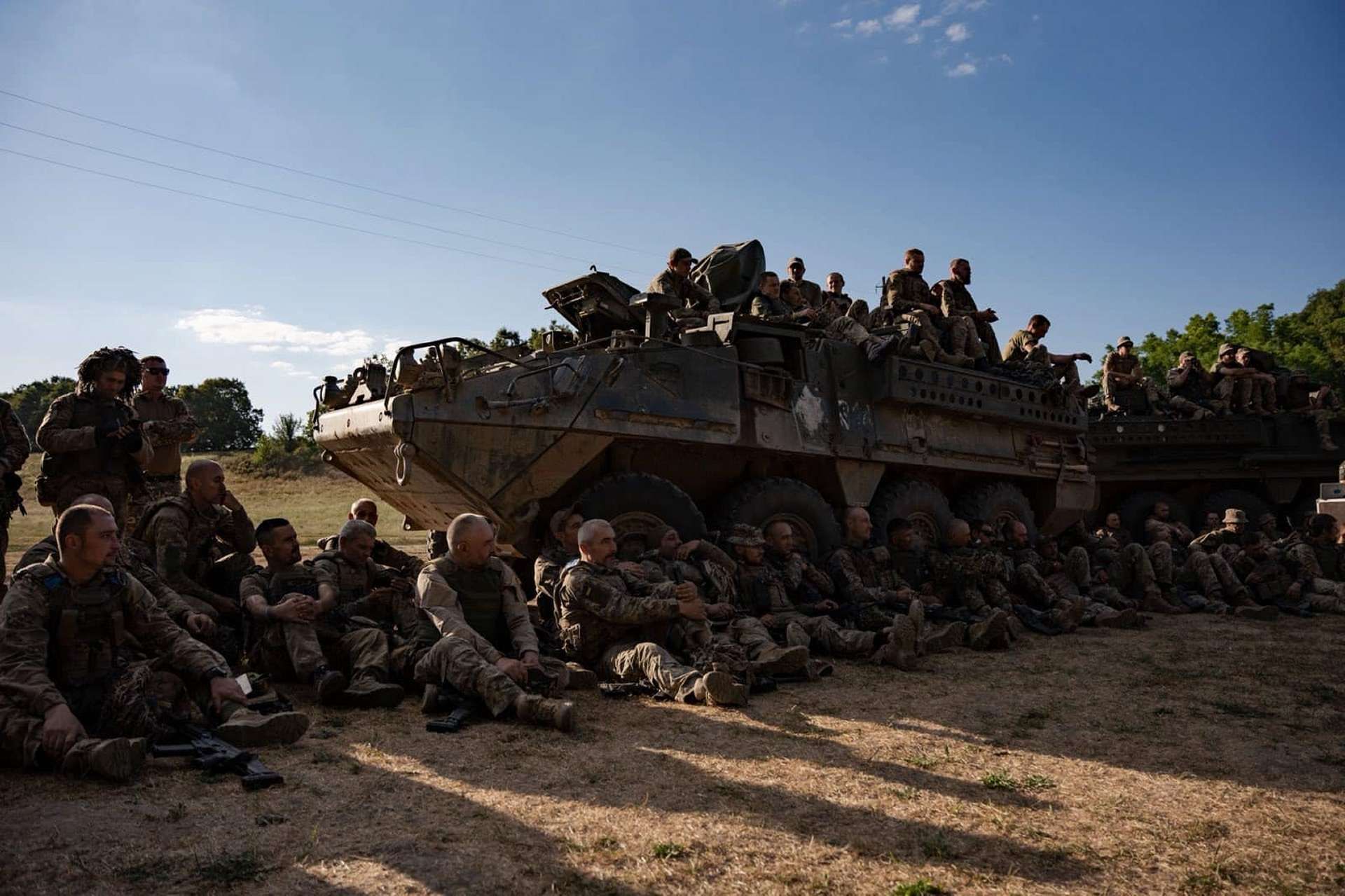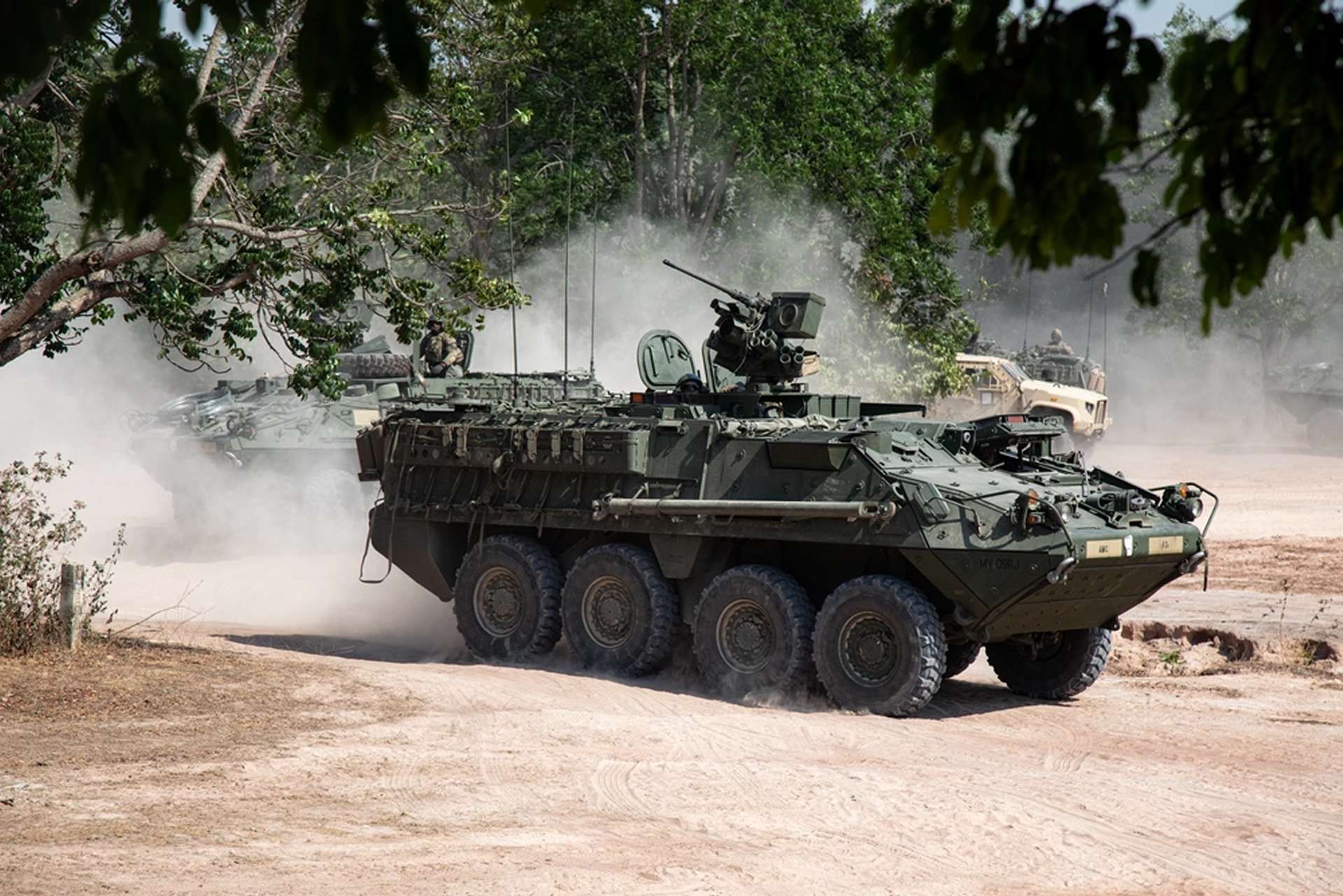Breaking News
Russian Forces capture first US-made M1126 Stryker APC during Ukraine's Kursk offensive.
On August 14, 2024, the Russian Telegram channel War Webm reported that the Russian army had captured its first U.S.-made M1126 Stryker armored personnel carrier. This event occurred in the Kursk region, where the Stryker, which was part of the 82nd Air Assault Brigade of the Ukrainian Armed Forces, was ambushed. The incident resulted in the capture of the vehicle and the death of its crew. The captured vehicle was subsequently displayed flying the flag of Russia's 810th Independent Marine Infantry Brigade.
Follow Army Recognition on Google News at this link

The captured M1126 Stryker was subsequently displayed flying the flag of Russia's 810th Independent Marine Infantry Brigade. (Picture source: Telegram/War Webm)
This capture is part of a broader context in which Russia has been publicly displaying captured Western military vehicles, including at exhibitions in Moscow organized by the Russian Defense Ministry. The exhibition features a variety of Western military hardware obtained from Ukrainian forces. Among the exhibited equipment are tanks such as the U.S. M1 Abrams, the German Leopard 2A6, and Ukrainian T-64BV mod. 2017 and T-72AG tanks.
The exhibition also includes U.S. Bradley M2A2, Ukrainian Azovests, Swedish CV9040C, and German Marder 1A3 infantry fighting vehicles, a British Husky tactical support vehicle, and a French AMX-10RC armored vehicle. This display is intended to highlight Western involvement in the conflict and support Russia's domestic narrative regarding the war.
The Stryker was captured during a significant Ukrainian incursion into Russia's Kursk Oblast, which began on August 6, 2024. This offensive is one of the largest cross-border operations in the ongoing conflict, with Ukrainian forces advancing up to 10 kilometers into Kursk Oblast within the first few days. The use of Strykers, alongside other Western-supplied vehicles such as the German Marder, facilitated the Ukrainian forces' ability to breach Russian defenses and secure key positions, including the Sudzha gas hub.

The use of Strykers, alongside other Western-supplied vehicles such as the German Marder, facilitated the Ukrainian forces' ability to breach Russian defenses and secure key positions, including the Sudzha gas hub. (Picture source: 82odshbr)
The use of Strykers by Ukrainian forces, supplied through military aid packages from the United States and other NATO allies, has demonstrated the vehicles' utility in rapid offensive operations. The Strykers provided mobility and protection for Ukrainian infantry as they moved through areas with limited Russian defenses. This advance required Russia to redeploy resources from other regions to respond to the Ukrainian offensive, particularly impacting its operations in areas like Donetsk.
As of the latest reports, Ukrainian forces have penetrated up to 20 kilometers into Russian territory, capturing around 74 settlements and approximately 1,000 square kilometers of land. Despite facing Russian air and artillery strikes, the Ukrainian advance has continued, supported by mechanized units, including the Strykers. In response, Russia has declared a state of emergency in Kursk and neighboring regions, indicating a significant commitment of resources to counter the Ukrainian operation.

The Strykers used by Ukrainian forces in Kursk are part of a larger supply of 189 units pledged by the United States and other NATO countries. (Picture source: 82odshbr)
The Strykers used by Ukrainian forces in Kursk are part of a larger supply of 189 vehicles pledged by the United States and other NATO countries. This includes 90 Stryker APCs and 20 mine rollers designed specifically for the Strykers. Developed by General Dynamics Land Systems for the U.S. Army, the Strykers are based on the Canadian LAV III and the Swiss Mowag Piranha. Introduced into service in 2002, the Stryker has been a key component of the U.S. Army's Stryker Brigade Combat Teams.
The Stryker family includes several variants designed for different battlefield roles, such as the M1126 Infantry Carrier Vehicle, the M1135 Nuclear, Biological, Chemical Reconnaissance Vehicle, and the M1128 Mobile Gun System. Over the years, the vehicles have been upgraded, including the addition of the Double V-Hull to improve survivability against improvised explosive devices. The Stryker is powered by a Caterpillar diesel engine and can reach speeds of up to 100 km/h. It is equipped with a Remote Weapon Station that can mount various weapons, including a .50-caliber machine gun and a 40mm grenade launcher.
The Stryker has been deployed extensively in conflicts such as those in Iraq and Afghanistan, where it has been noted for its versatility. However, challenges related to its armor and mobility, particularly under heavy loads, have been identified. Recent upgrades to the Stryker include improvements to power generation, mobility, and network capabilities, as well as the integration of advanced weapon systems like the Javelin missile.

Introduced into service in 2002, the Stryker has been a key component of the U.S. Army's Stryker Brigade Combat Teams. (Picture source: US DoD)


























